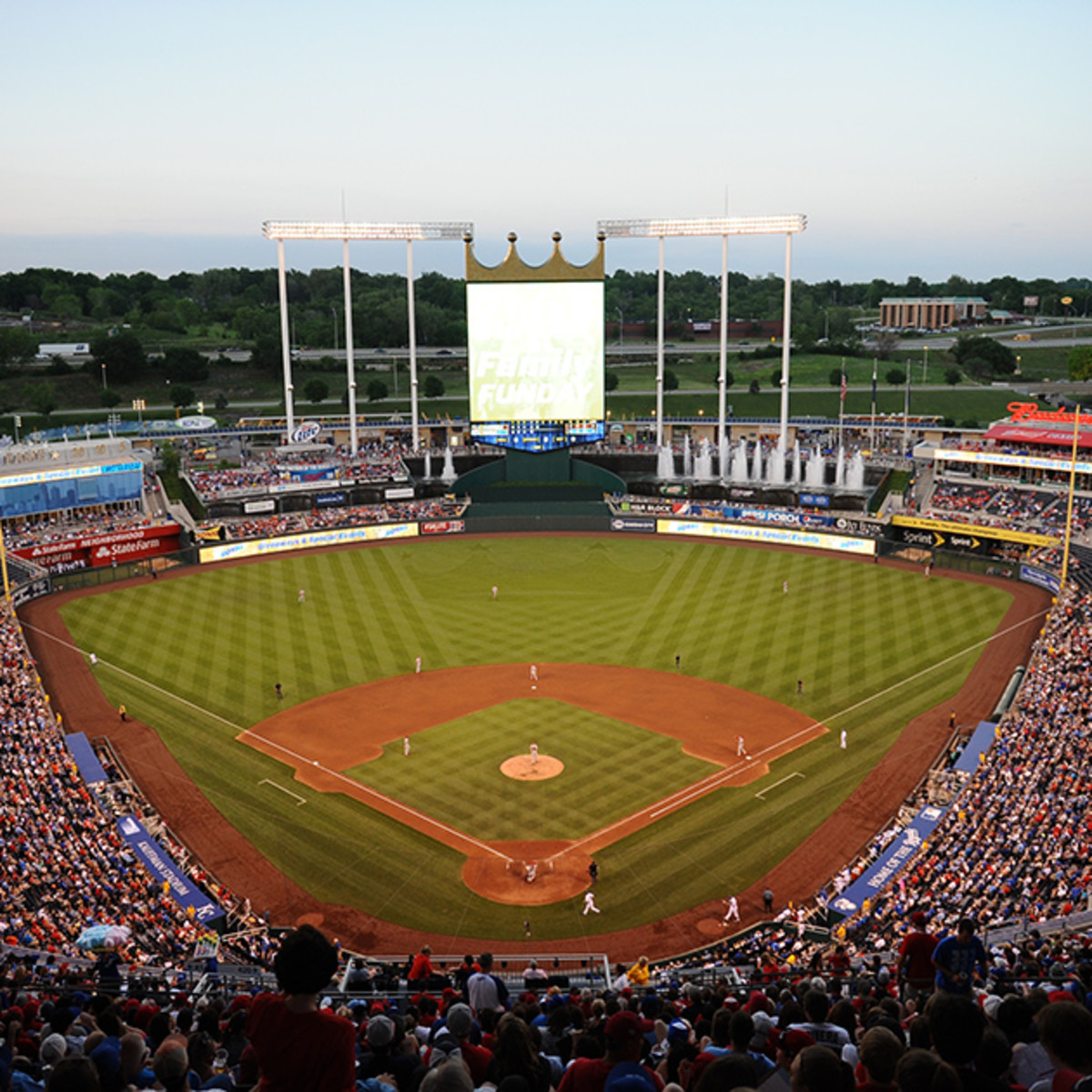Creating outfield masterpieces: How MLB teams turn grass into art

Trevor Vance, head groundskeeper for the Kansas City Royals, says he keeps things pretty simple in K.C. Well, if you call designing in an entire crown logo throughout the outfield simply by rolling and manipulating the angles of grass blades then, sure, K.C. keeps it simple.
“Some people might be more scientific and grid it, make a grid and figure all that out,” Vance tells SI.com. “We’re pretty simple here in K.C.”
And by that, Vance means they roughed in the crown, which first appeared during the MLB All-Star game in 2012, didn’t show up in 2013 and was seen during the 2014 playoffs, using ropes and a spotter in the upper grandstands directing the template creation.
Using hoses and ropes to diagram the template may have proven the most unscientific way to design in-grass logos in MLB in Vance’s mind, but as teams really start to shine with their groundskeeper prowess—the Padres and Dodgers have shown early-season pop with their outfield logos—the logos have gotten larger and more intricate.
Here’s how they do it.
Using absolutely no paint, the logo is a contrast between light and dark shades of grass blades. The light stripes are areas mowed away from you, while the dark is the area mowed at you. The more you can contrast those two colors, the greater versatility you have, Vance says.
Using reel mowers—not a traditional rotary mower that most homeowners use—groundskeepers have a machine that stands the grass up, clean cuts it and then lays it down with a roller the direction you are mowing. For large areas of color differential you need only a large reel mower to give distinction to the grass, simply using the cross-cut pattern of two directions.
But when crowns, stars and more enter the fray, the details require a bit more effort. Corn brooms, smaller mowers and rollers can really detail a logo. In extreme detailing sections, Vance says his crew has used a tile roller that rolls grass in one direction, picks it up and rolls again, to really emphasize the contrast. Plus, fit on the end of a weed eater, rubber-paddled brooms pound in patterns when needed.
Vance, a member of the Sports Turf Managers Association, says they are careful not to make the ball play any differently—some crews will hose the grass in a direction, but that hasn’t happened in Kansas City.
“As a groundskeeper, the pattern is there for the fans and TV,” he says. “Players don’t see it or care. We want the field to shine, but not be bigger than the game.”
For Opening Day this season, Vance used a more traditional checkerboard pattern for some artistic enjoyment, but without overshadowing the game itself. But the bigger the stage, the more room there is for extra fun, such as crowns.

“People love it,” Vance says. “If I was going to say I was going to throw the crown out there, people would get excited. It is one of those things you can see your end result.”
As the crews has “thrown the crown” out there multiple times now, it has gotten easier, learning from mistakes and gaining understanding for better shaping each time. Now it may take only an additional hour of mowing to get a fancy design in the outfield.
When it comes, though, that is more of a mystery. “It usually comes to us totally unexpected,” Vance says. “Believe it or not, in 2014 we were at a fish fry and that is when we came up with the idea that we should bring the crown back (for a six-game homestand against the Cardinals and Yankees). It just comes to us. We’ve flirted with some other ideas, but nothing is definite on what we are doing next.”
No matter what we do see in the future, just don’t—even if Vance does—call it simple.
Tim Newcomb covers stadiums, design and gear for Sports Illustrated. Follow him on Twitter at @tdnewcomb.
